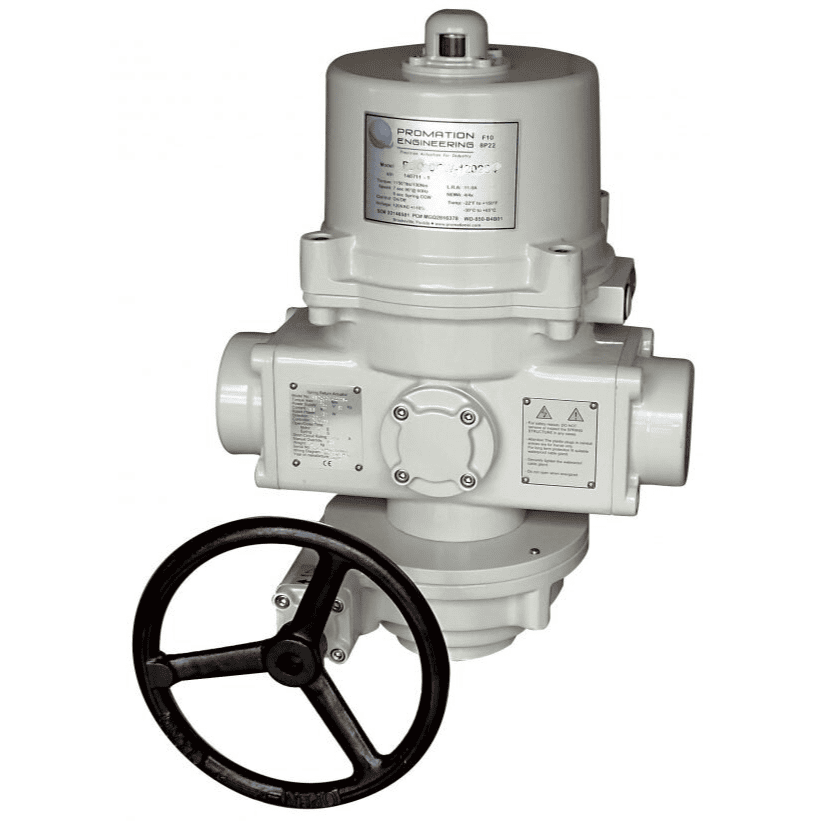
In industrial automation and process control, ensuring safety during power failures or system malfunctions is paramount. The Spring Return Electric Actuator is a key component designed to provide fail-safe operation, automatically returning valves or other equipment to a predetermined safe position (fully open or fully closed) when power is lost.
Unlike standard actuators that remain in their last position during a power outage, spring return actuators utilize a built-in spring mechanism to ensure immediate response in emergencies. This feature makes them indispensable in industries where safety, reliability, and rapid fail-safe operation are critical.
This article explores the functionality, advantages, and applications of spring return electric actuators, compares them with non-spring return models, and answers key questions to help engineers and operators choose the right solution for their systems.
A Spring Return Electric Actuator is an electromechanical device that controls the movement of valves, dampers, or other industrial equipment. Its defining feature is its fail-safe mechanism, which ensures that the actuator returns to a preset position (either fully open or fully closed) when power is interrupted.
During normal operation, the actuator uses electric power to move the valve to the desired position.
The spring is charged (compressed) when the actuator moves away from its fail-safe position.
If power is lost, the stored spring energy is released, forcing the actuator (and the connected valve) back to its default safety position.
This automatic reset function is crucial in preventing hazardous situations, such as uncontrolled fluid/gas flow, overheating, or pressure buildup in pipelines.
Fail-Safe Operation – Automatically reverts to a safe position during power loss.
High Reliability – Designed for critical applications where safety is non-negotiable.
Durability – Engineered for long service life with minimal maintenance.
Versatility – Compatible with ball valves, butterfly valves, and other industrial valves.

While both types of actuators serve valve automation, their operational differences make them suitable for distinct applications.
|
Feature |
Spring Return Actuator |
Non-Spring Return Actuator |
|
Fail-Safe Mechanism |
Yes (spring-driven return) |
No (stays in last position) |
|
Power Consumption |
Higher (spring charging) |
Lower (no spring mechanism) |
|
Response to Power |
Loss Returns to safe position |
Remains in current position |
|
Best For |
Safety-critical systems |
Continuous control applications |
|
Common Applications |
Oil & gas, chemical plants, fire protection |
HVAC, water treatment, general automation |
Emergency Shutoff Systems – Prevents leaks or explosions in power outages.
Fire Protection Valves – Ensures valves open/close during emergencies.
Chemical & Petrochemical Plants – Avoids hazardous material release.
Nuclear Power Facilities – Critical for radiation containment.
Precision Flow Control – Ideal for modulating valves in HVAC systems.
Energy Efficiency – No spring charging reduces power consumption.
Continuous Process Automation – Suitable for systems where position retention is acceptable.
Due to their fail-safe reliability, these actuators are widely used in industries where safety and quick response are critical:
Pipeline Shutoff Valves – Prevents spills during power failures.
Refinery Safety Systems – Ensures valves close to avoid fires/explosions.
Emergency Release Valves – Stops toxic chemical leaks.
Pressure Relief Systems – Automatically vents excess pressure.
Coolant Control Valves – Prevents overheating in reactors.
Turbine Bypass Systems – Safely redirects steam during failures.
Flood Prevention Gates – Closes automatically in power outages.
Chemical Dosing Valves – Stops overdosing in emergencies.
Sprinkler Control Valves – Ensures water flow during fire incidents.
Smoke Damper Actuation – Closes dampers to contain smoke spread.
It automatically moves a valve to a preset safe position (open or closed) when power is lost, using stored spring energy. This prevents dangerous situations in critical systems.
Spring Return: Returns to safe position on power loss.
Non-Spring Return: Stays in last position (no automatic fail-safe).
While highly durable, periodic inspection is recommended to ensure the spring remains functional, especially in high-cycle applications.
Yes, but they are primarily designed for on/off operation. For precise flow control, a non-spring return actuator may be more efficient.
Yes, due to the added spring mechanism. However, the safety benefits justify the cost in critical applications.
The Spring Return Electric Actuator is an essential component for industries where fail-safe operation is non-negotiable. Its ability to automatically revert to a safe position during power loss makes it invaluable in oil & gas, chemical plants, fire safety systems, and power generation.
While non-spring return actuators offer energy efficiency and precise control, they lack emergency safety features. Therefore, selecting the right actuator depends on application requirements—whether the priority is safety fail-safe (spring return) or continuous modulation (non-spring return).
For engineers and plant operators, understanding these differences ensures optimal system performance, enhanced safety, and operational reliability.